Damascus – al-Madrasa al-Zahiriyeh دمشق – المدرسة الظاهرية
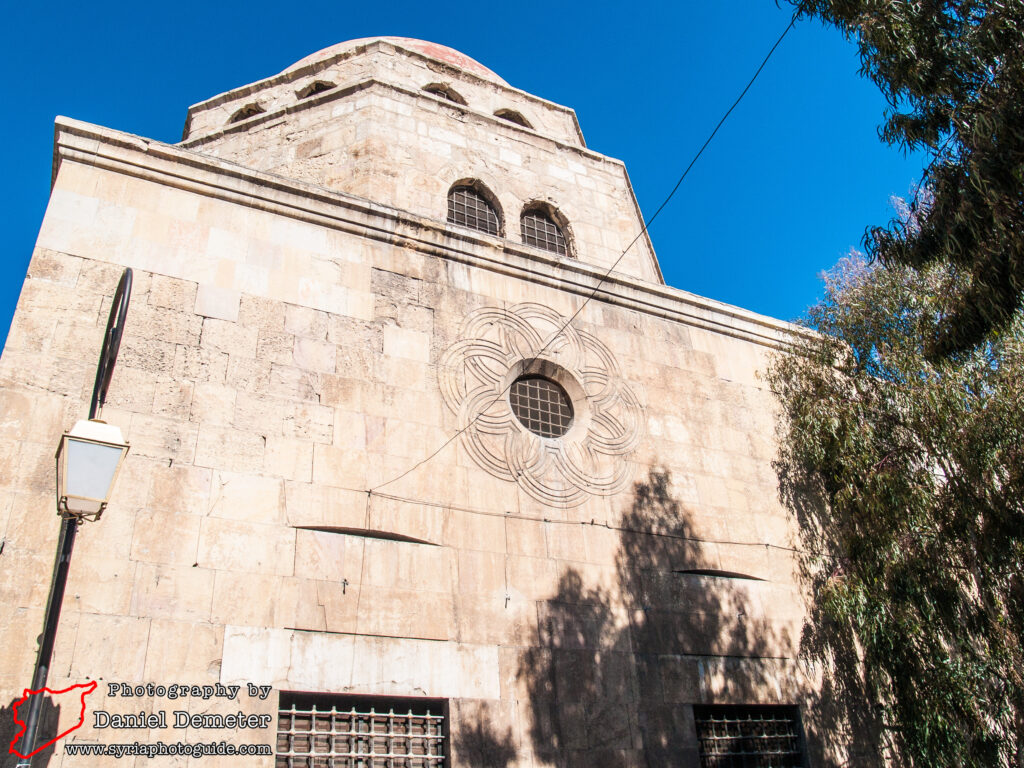
al-Madrasa al-Zahiriyeh (المدرسة الظاهرية) is an impressive Mamluk-era religious school constructed to serve as the mausoleum of al-Zahir Rukn al-Din Baibars al-Bandaqdari (الظاهر ركن الدين بيبرس البندقداري). Baibars (بيبرس) was born in 1223 and first came to prominence as a commander of Mamluk armed forces. He was instrumental in the defeat of the Seventh Crusade of Louis IX of France and, a decade later, the 1260 defeat of the Mongols in the Battle of Ain Jalut. Baibars (بيبرس) became the fourth Sultan of Egypt after the 1260 assassination of Sultan Seif al-Din Qutuz (سيف الدين قطز), an assassination likely planned by Baibars (بيبرس) himself.
As Sultan, Baibars (بيبرس) was determined to uproot the Crusader presence in Syria. Military campaigns in 1263 led to the defeat of Crusader forces in numerous towns throughout Palestine, though his attacks on the Crusader capital of Acre proved unsuccessful. He successfully besieged and captured Antioch (modern Antakya, Turkey) in 1268, and laid siege to Tripoli (modern Trablous, Lebanon) 1271. Baibars (بيبرس) died in 1277, though there is speculation surrounding the cause. Some sources suggest he was poisoned, while other sources suggest he died from battle wounds or from illness.
Baibars (بيبرس) remains highly regarded in the Muslim world, particularly in Egypt, Syria and Kazakhstan, the latter being his family’s country of origin. The Battle of Ain Jalut is considered by scholars to have been of tremendous historical significance, and Baibars (بيبرس) played a crucial role in that battle. He also played an important role in the later adaptation of Islam by the Mongols. Numerous infrastructure projects including bridges, canals, harbors, fortifications, mosques and schools were completed under his reign.
al-Madrasa al-Zahiriyeh (المدرسة الظاهرية) was constructed shortly after the death of Baibars (بيبرس) under the rule of his son, al-Said Nasr al-Din Barakeh (السعيد ناصر الدين بركة). It was built upon a palatial residence that once belonging to al-Afdal Najm al-Din Ayoub Bin Shadhi Bin Marwan (ألأفضل نجم الدين أيوب بن شاﺬي بن مروان), the father of Salah al-Din Yousef Bin Ayoub (صلاح الدين يوسف بن أيوب). The domed burial chamber at the southwestern corner of the building and western monumental entrance were added to the building at this time, while the rest of the building converted into a religious school. Both Baibars (بيبرس) and his son are buried in the mausoleum.
Approaching al-Madrasa al-Zahiriyeh (المدرسة الظاهرية) from the southern side, note the stone-carved geometric medallion. On the western side of the building, the entrance portal is a particularly magnificent example of Mamluk architecture. It features alternating bands of black and yellow stone, with three bands of finely carved inscriptions. The half-dome over the entrance includes impressive muqarnas work, transitioning from semi-circle to rectangle. This entryway leads into a fairly austere central courtyard. The mausoleum, immediately to the right upon entry, is a domed chamber with extraordinary decorative work. It features polychrome patterned marble on the walls and several friezes of carved marble. There is a remarkable mihrab in patterned marble with a mosaic half-dome framed by colonnettes. Perhaps most striking is the wide band of mosaic work above, a style which clearly imitates the mosaics on the northern façade of the Umayyad Mosque (الجامع الاموي).
Access to al-Madrasa al-Zahiriyeh (المدرسة الظاهرية) may be unpredictable. The caretaker, if on site, will usually allow visitors into the courtyard and mausoleum. Directly across from al-Madrasa al-Zahiriyeh (المدرسة الظاهرية), and also worth visiting, is al-Madrasa al-Aadiliyeh (المدرسة العادلية).
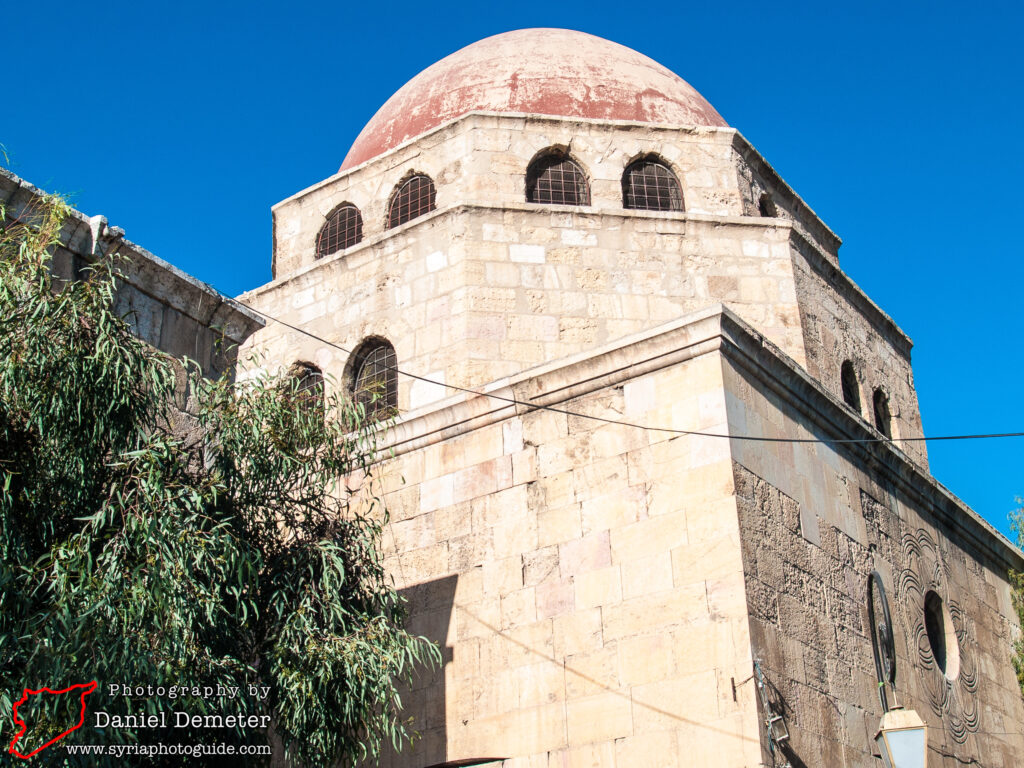
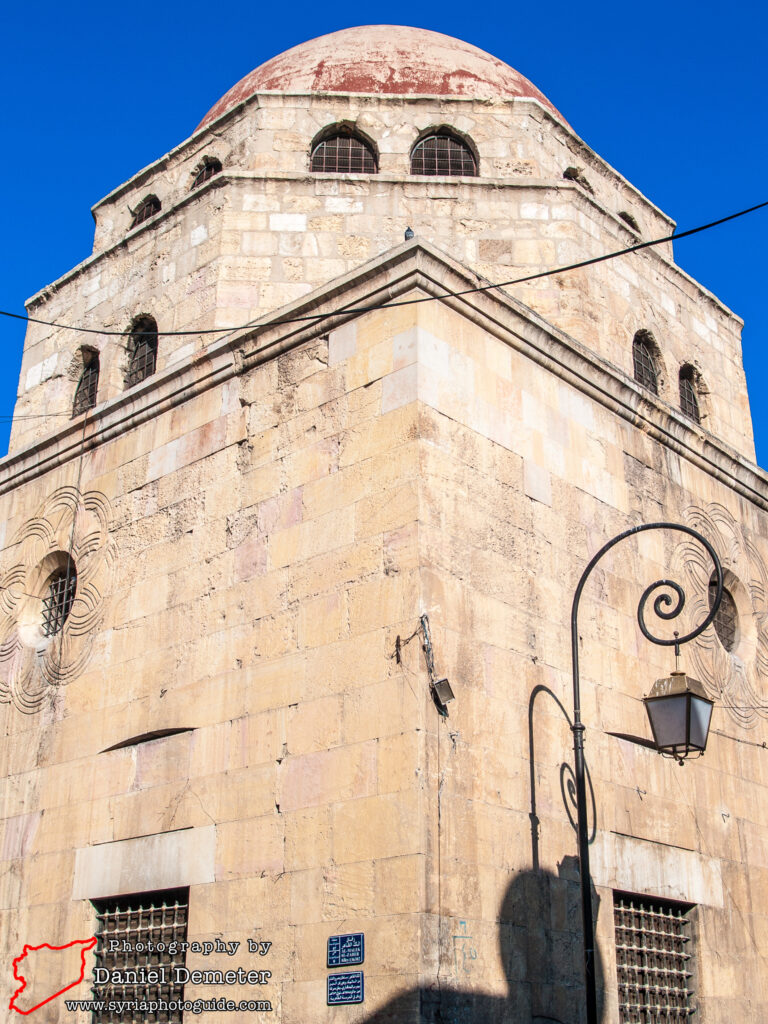
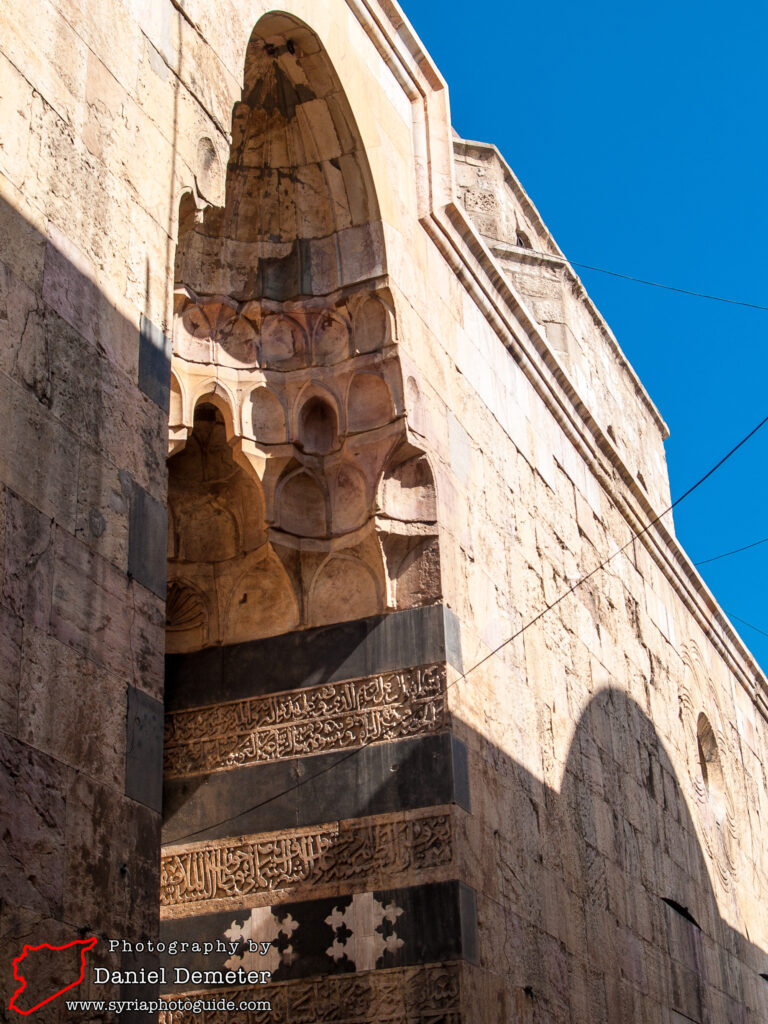
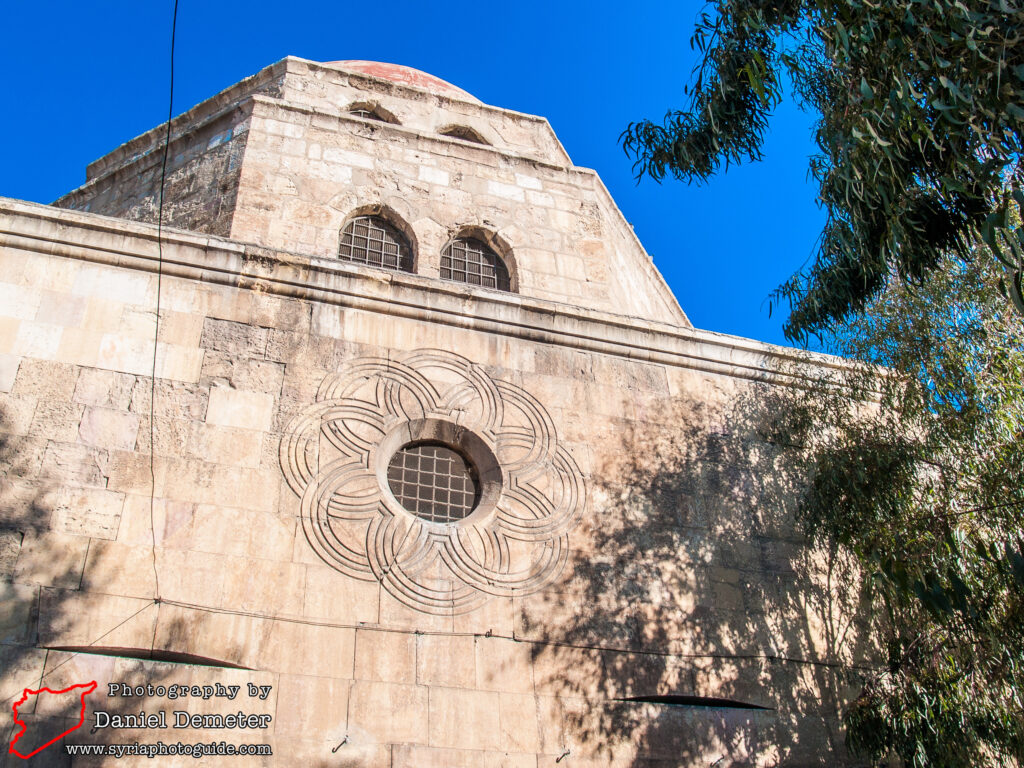
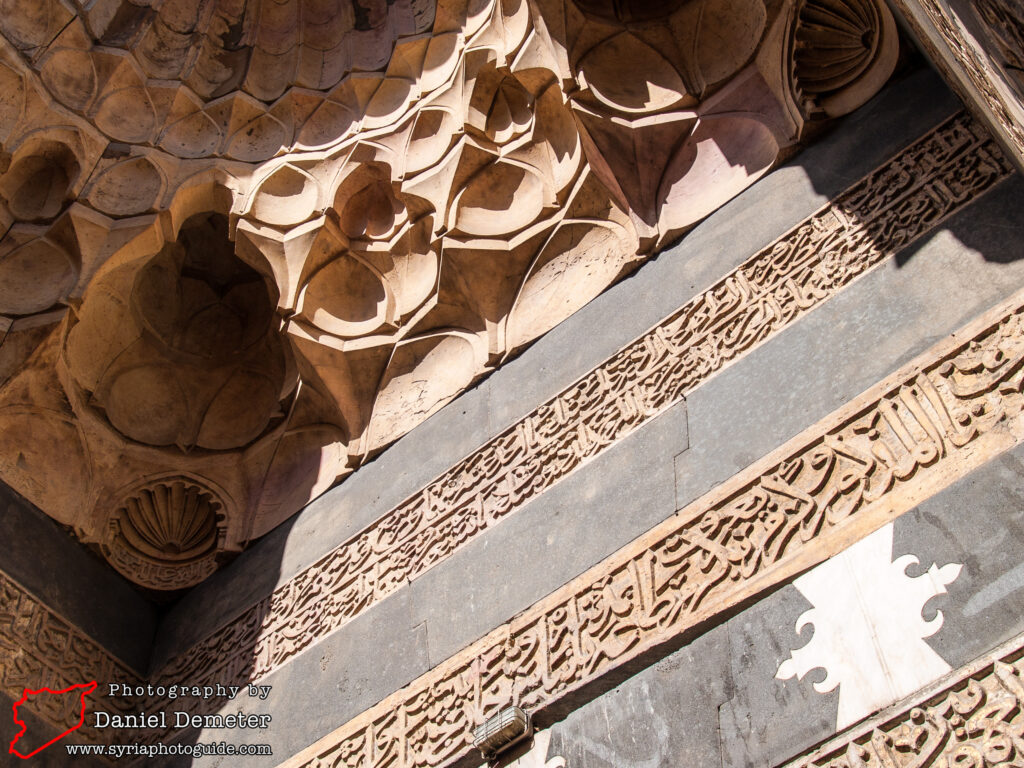
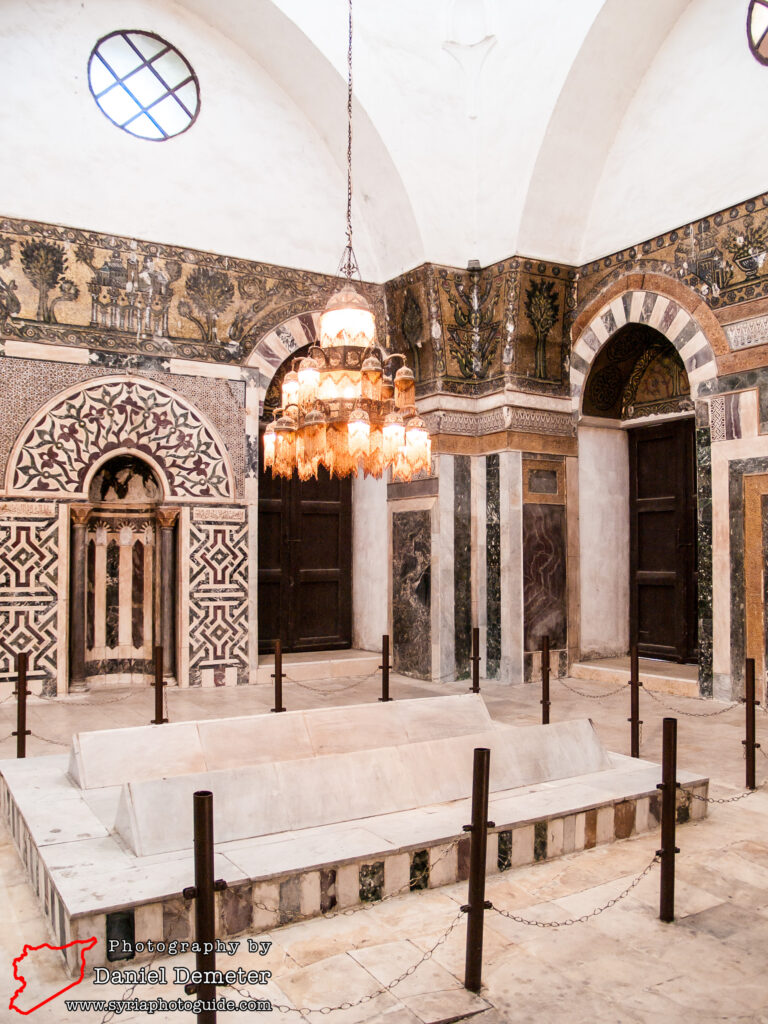
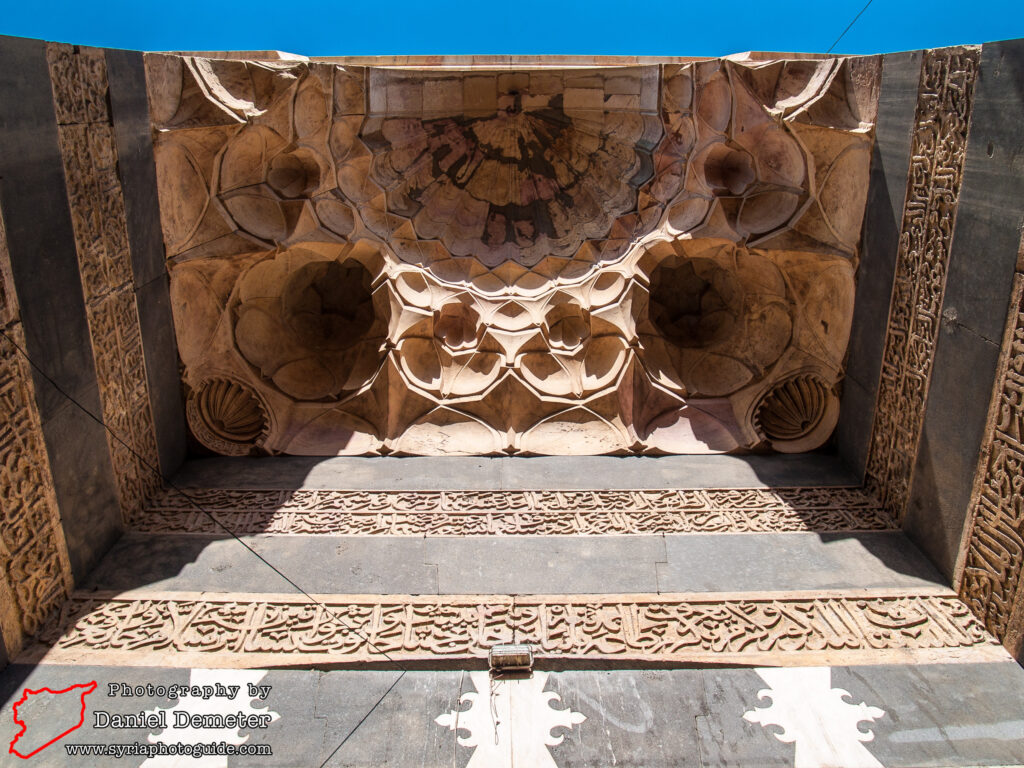
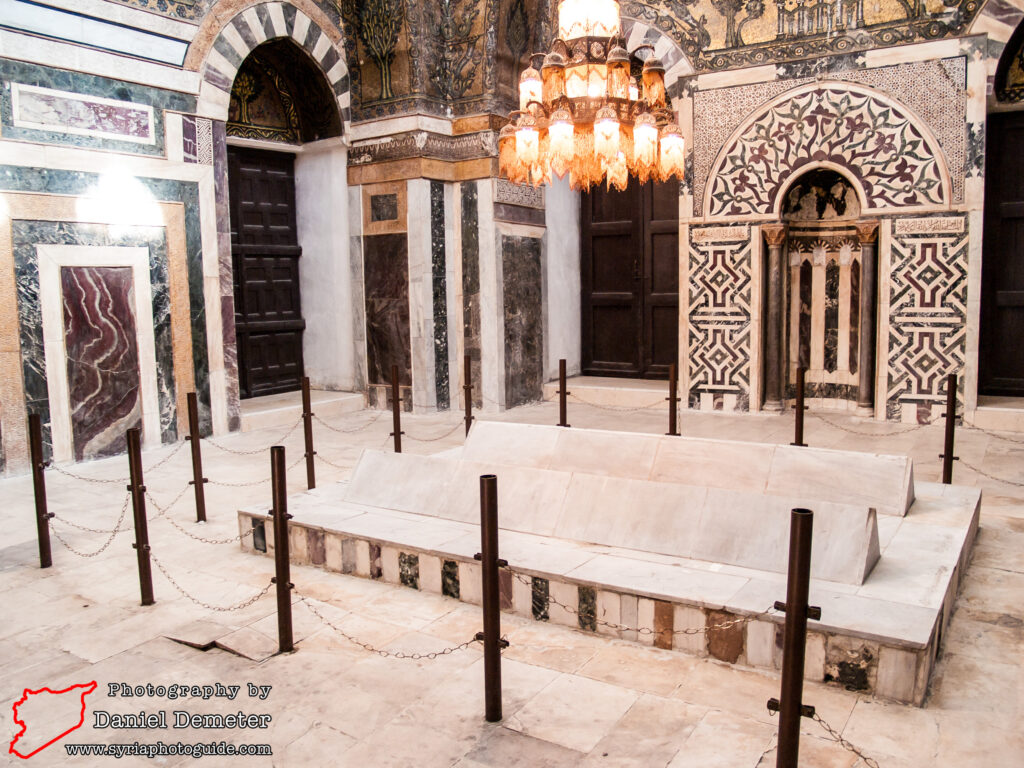
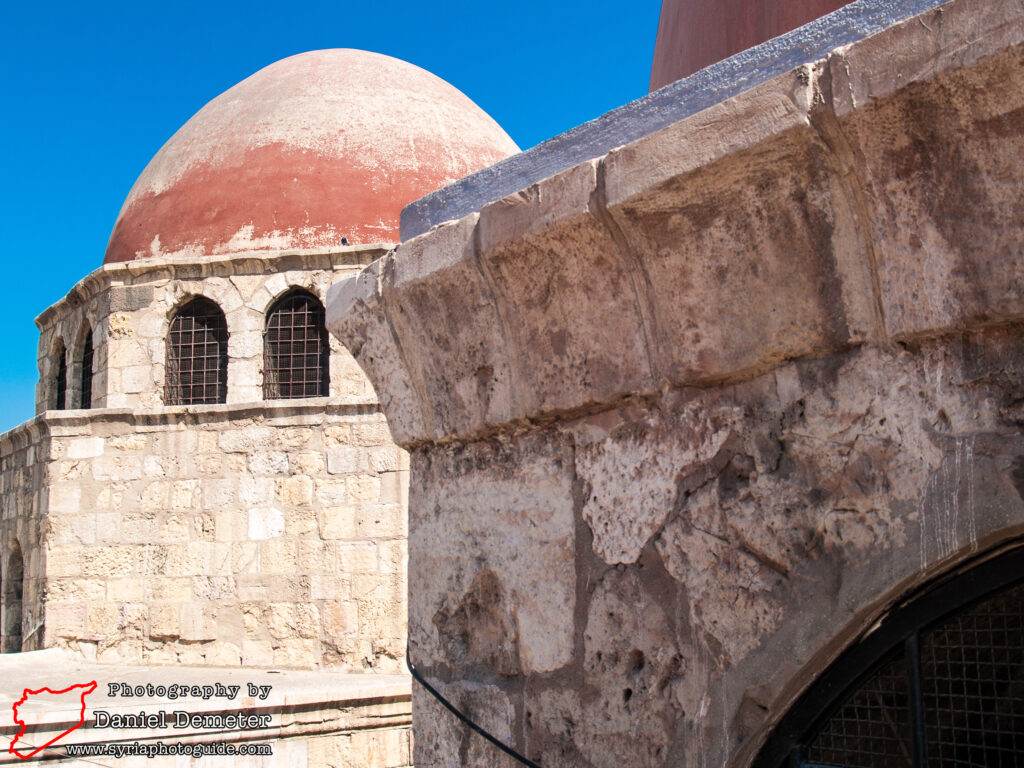
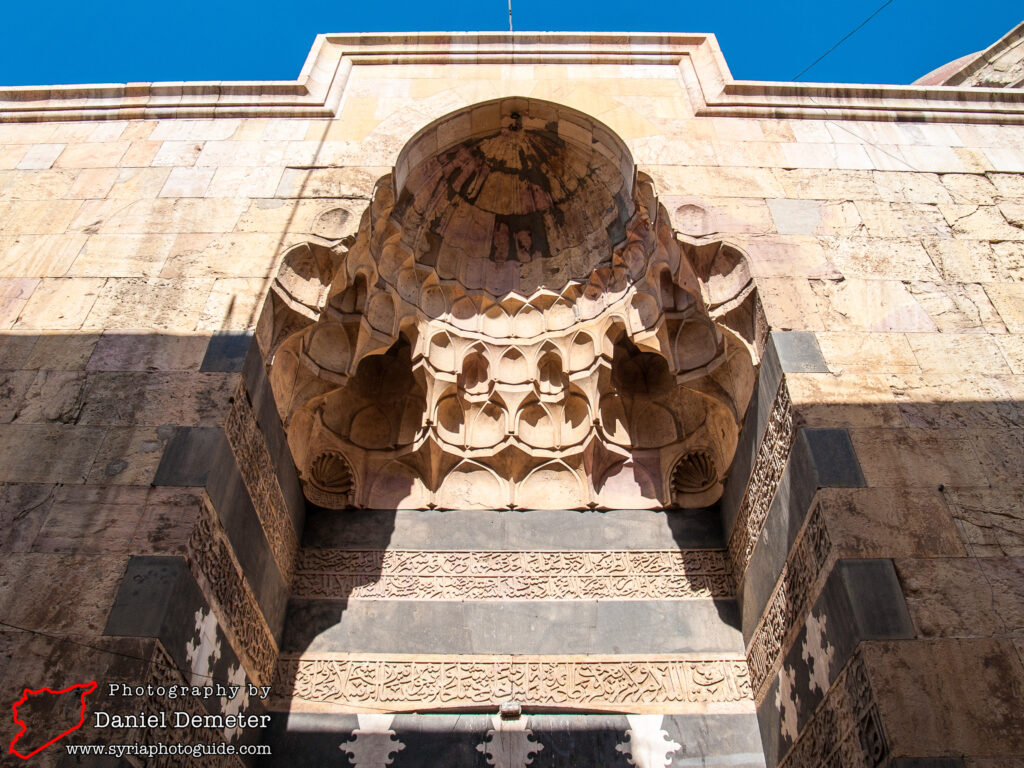
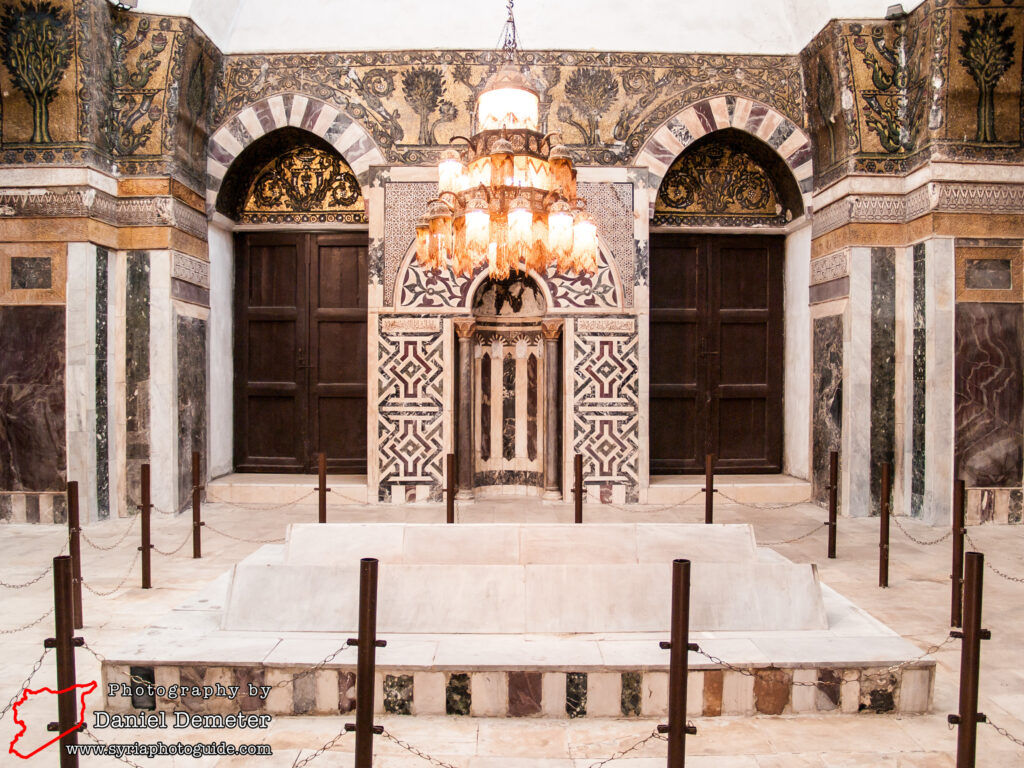
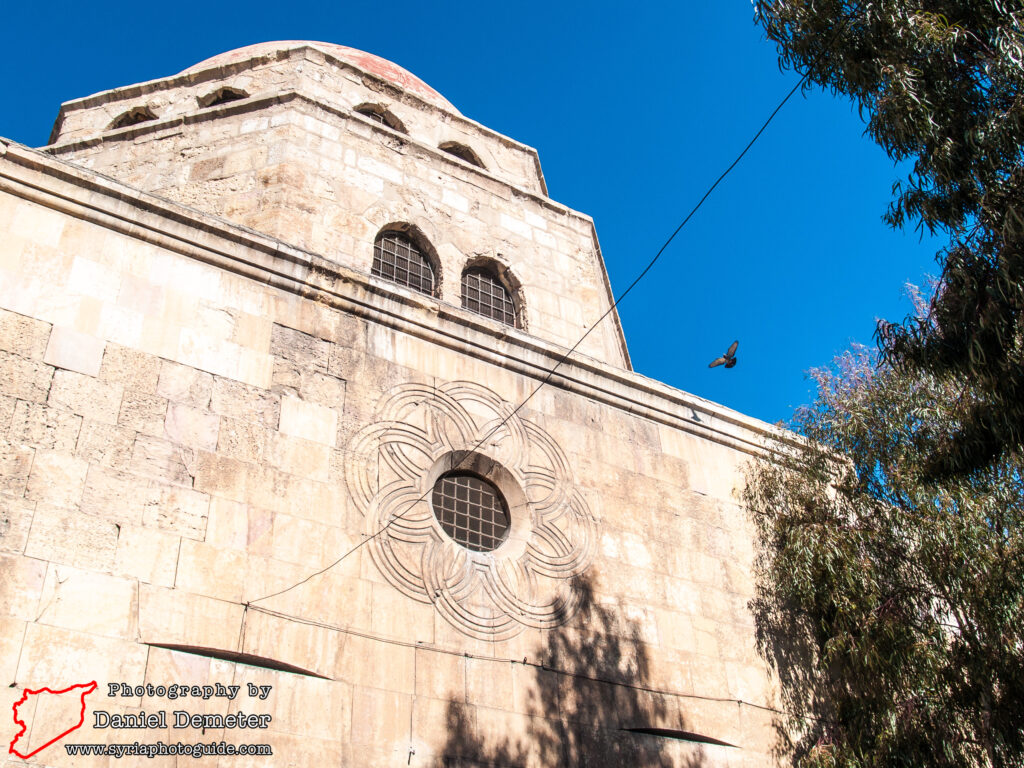
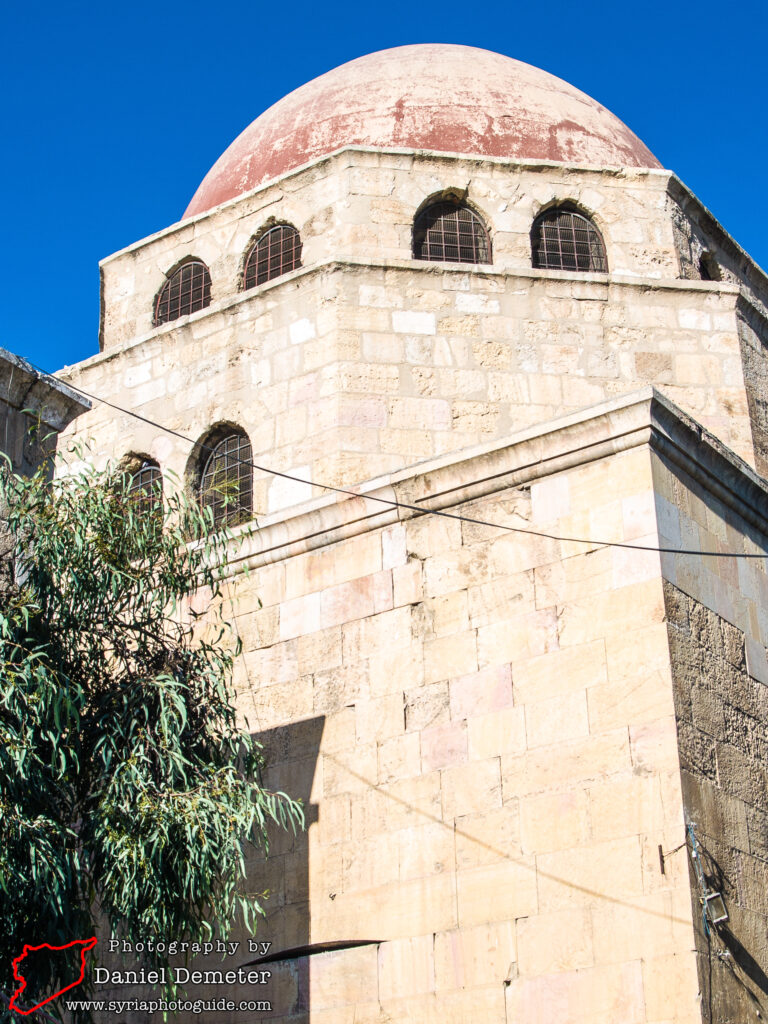
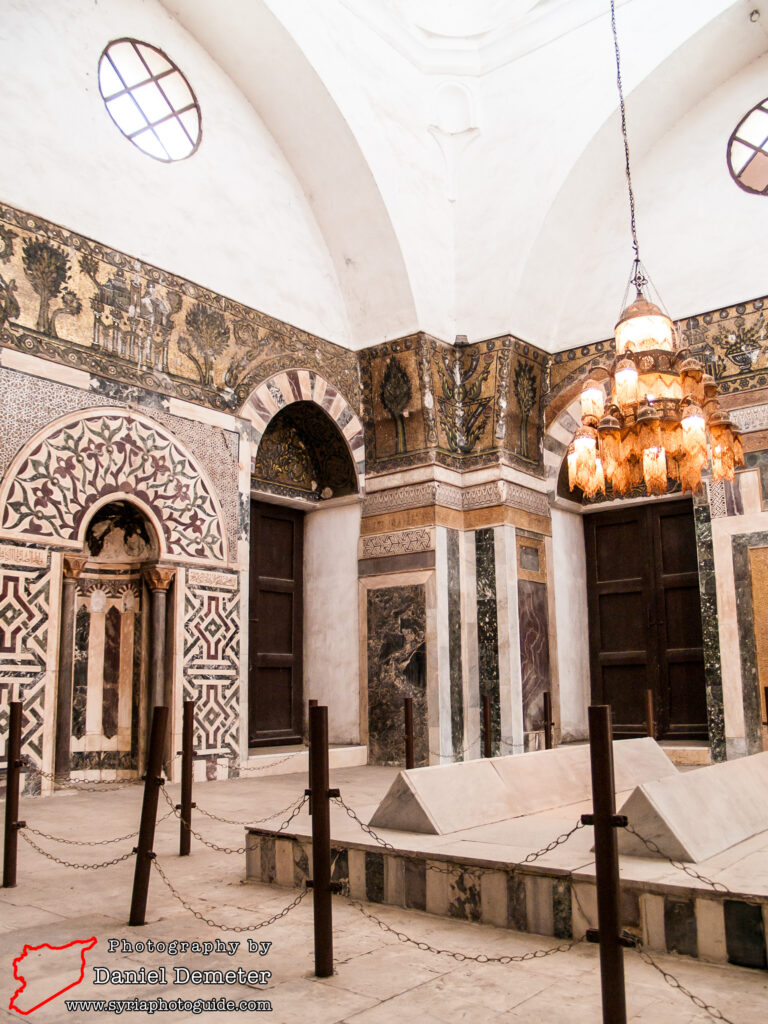
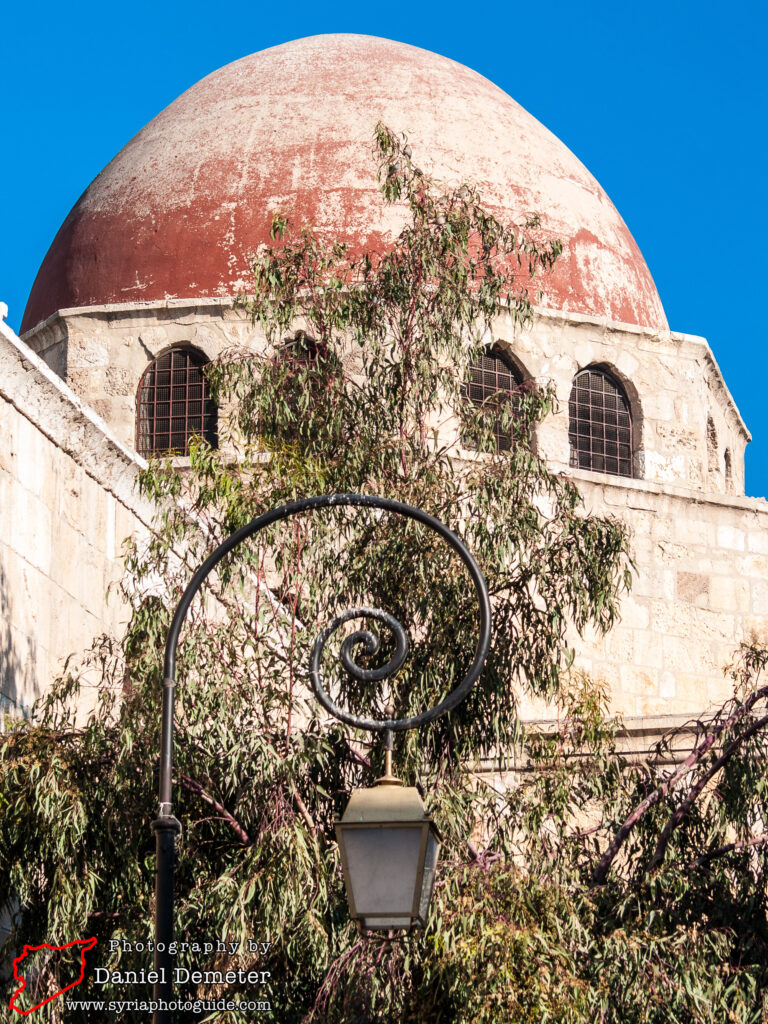
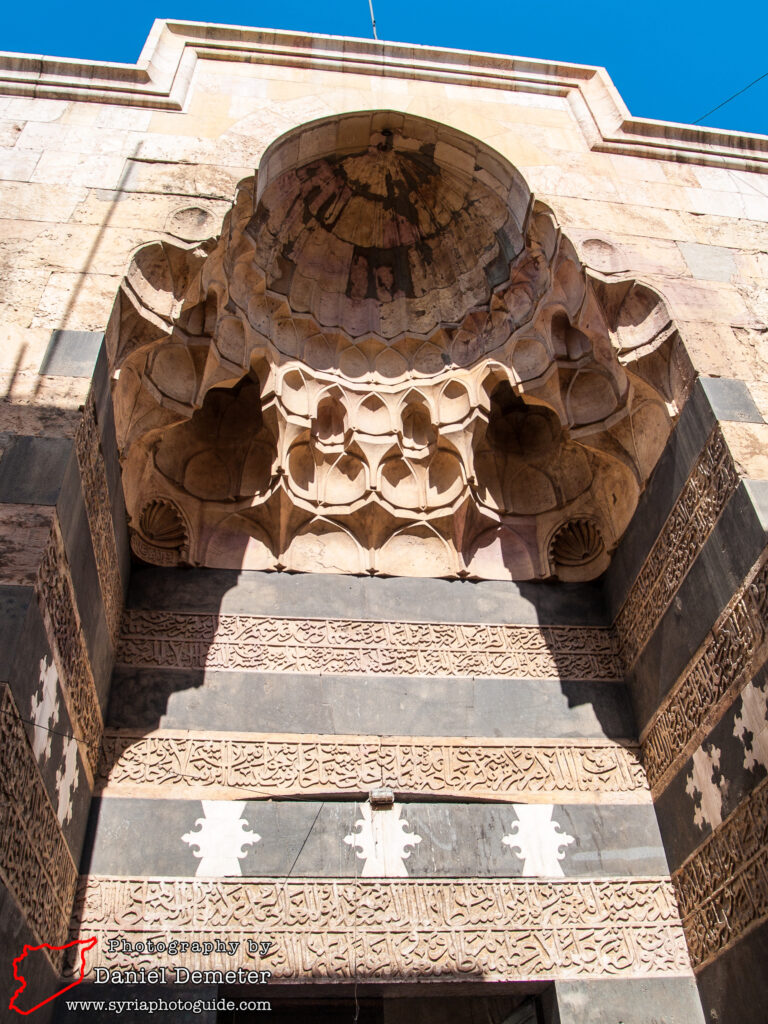
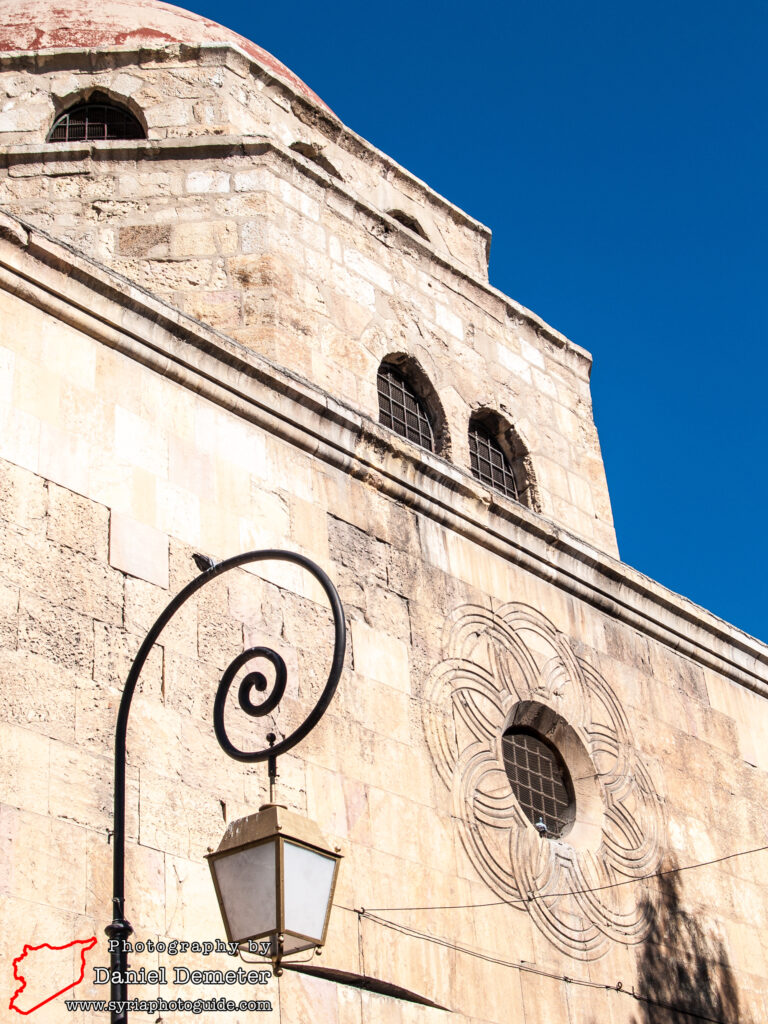
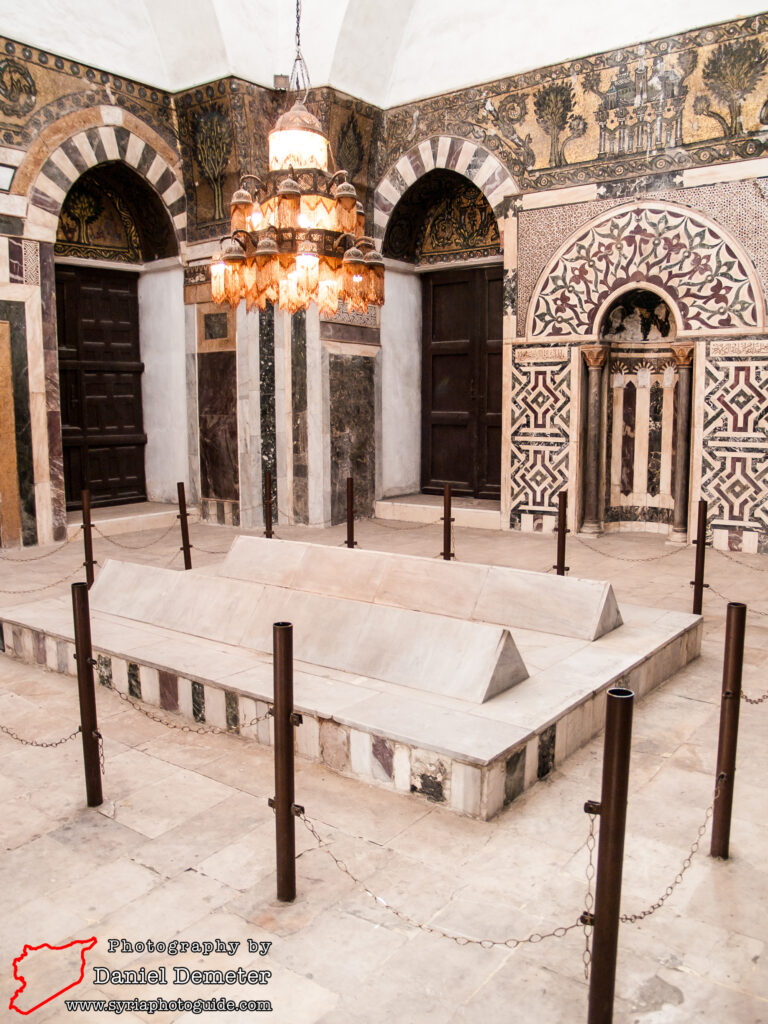
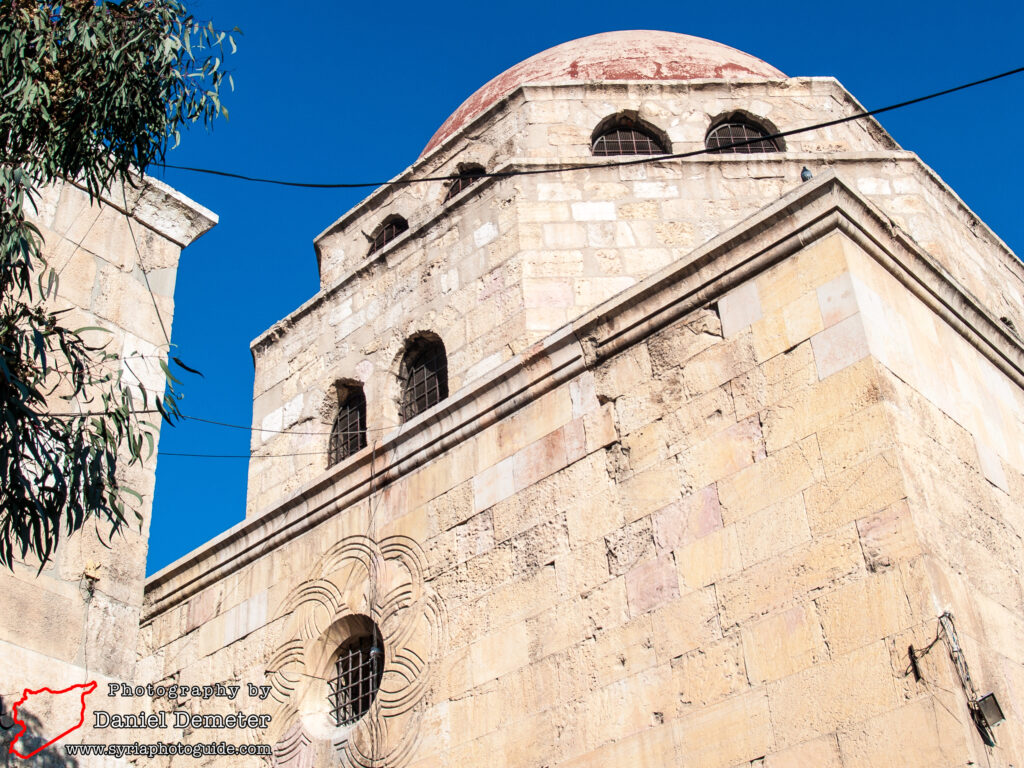
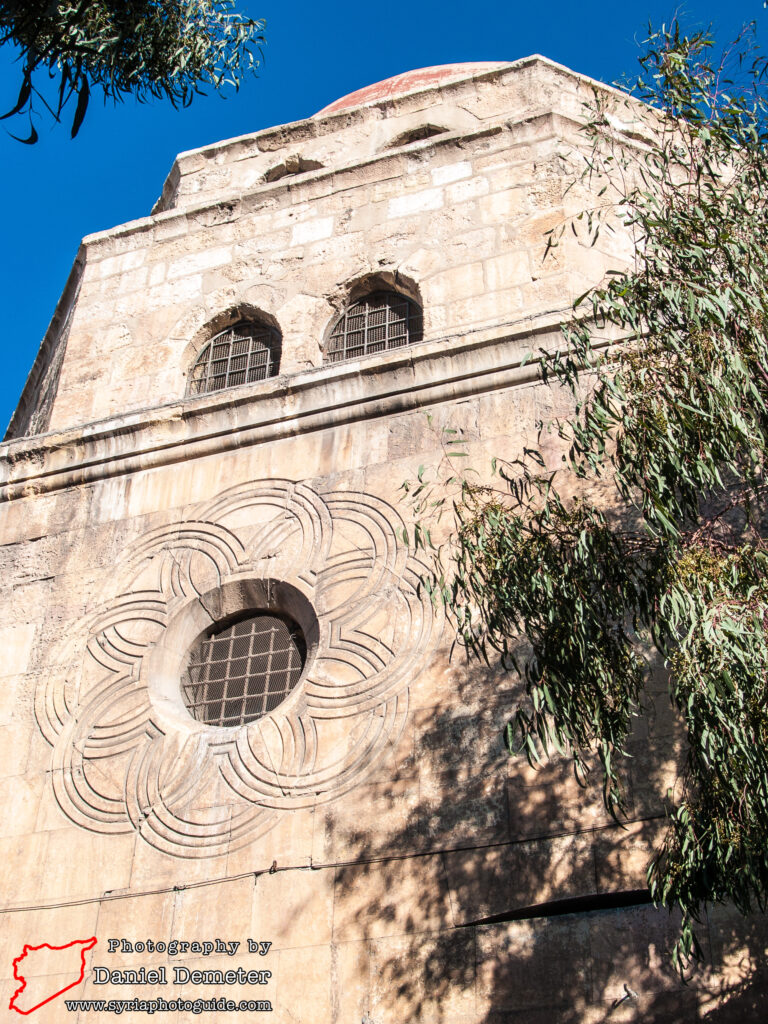
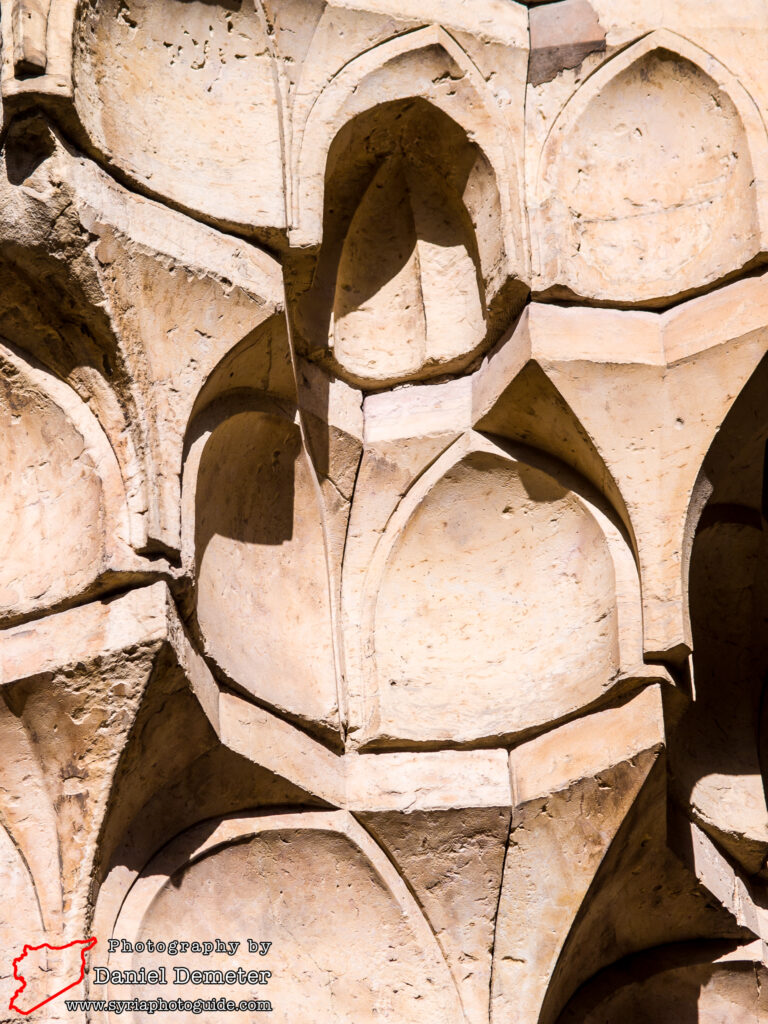
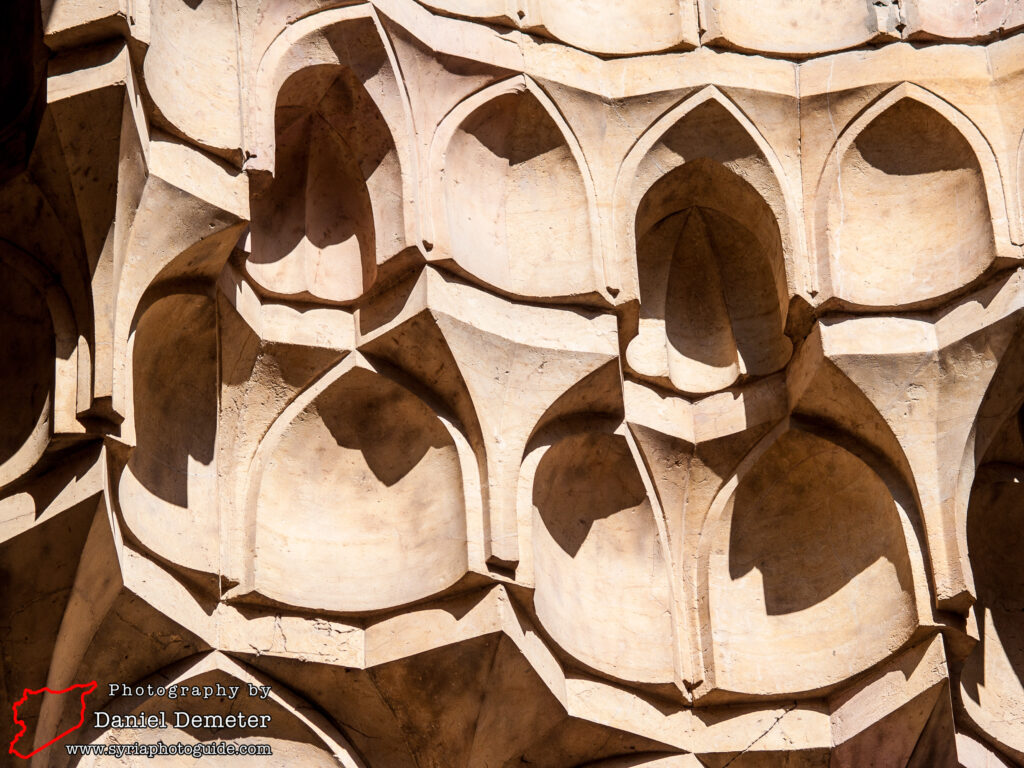
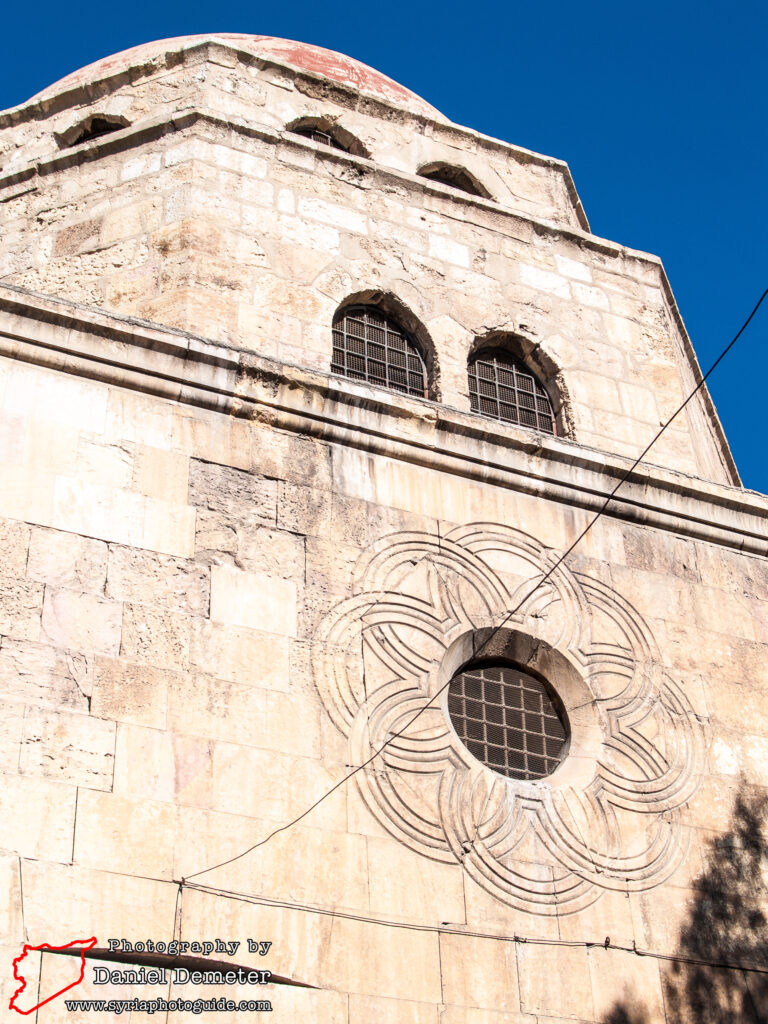
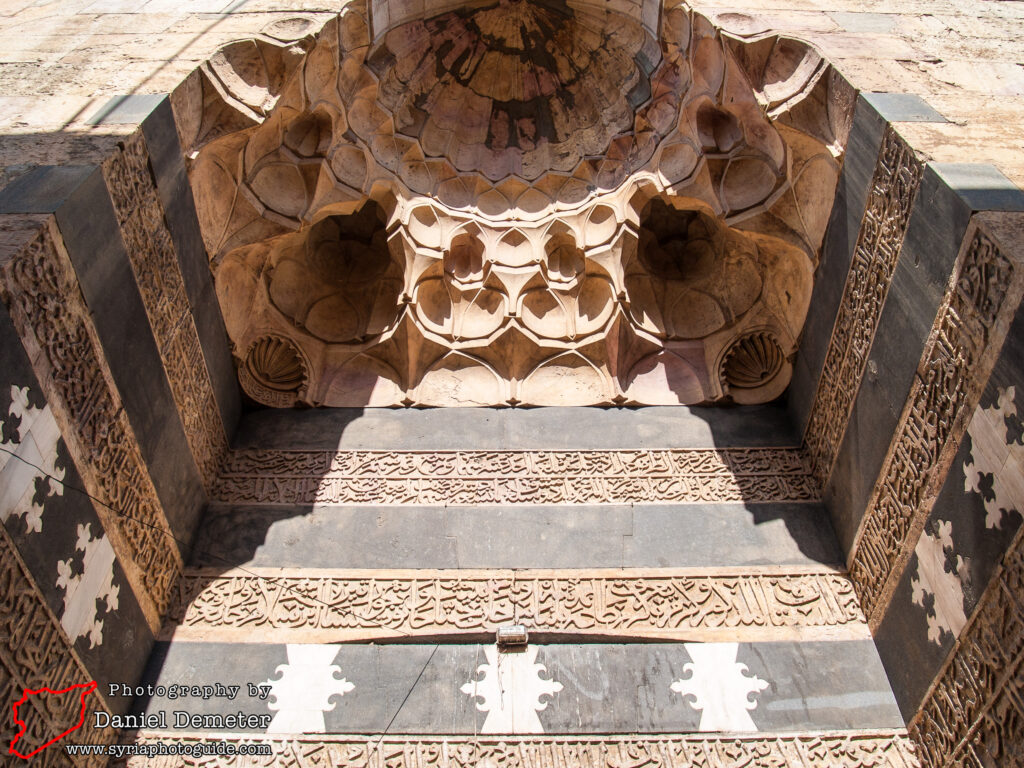
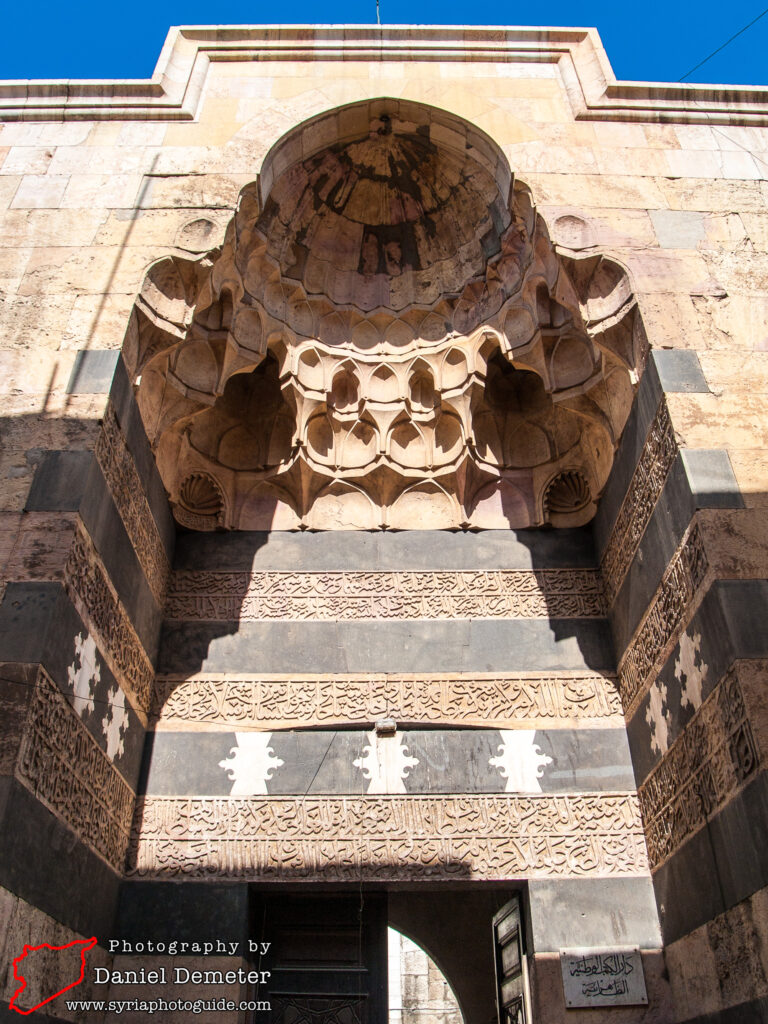
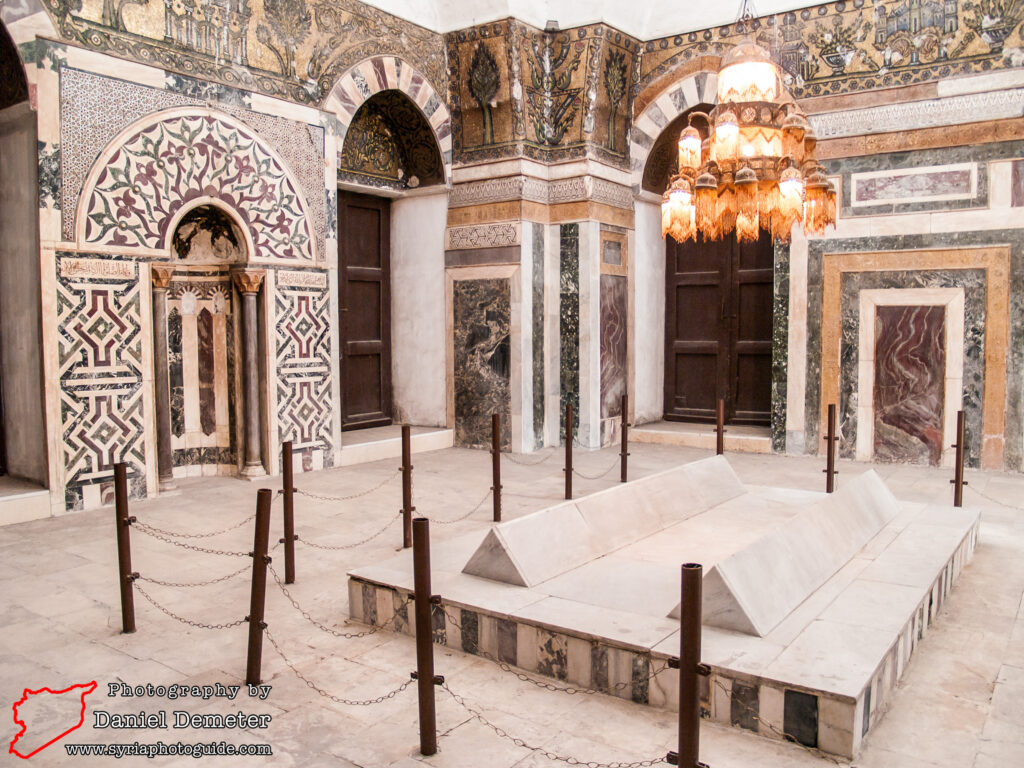
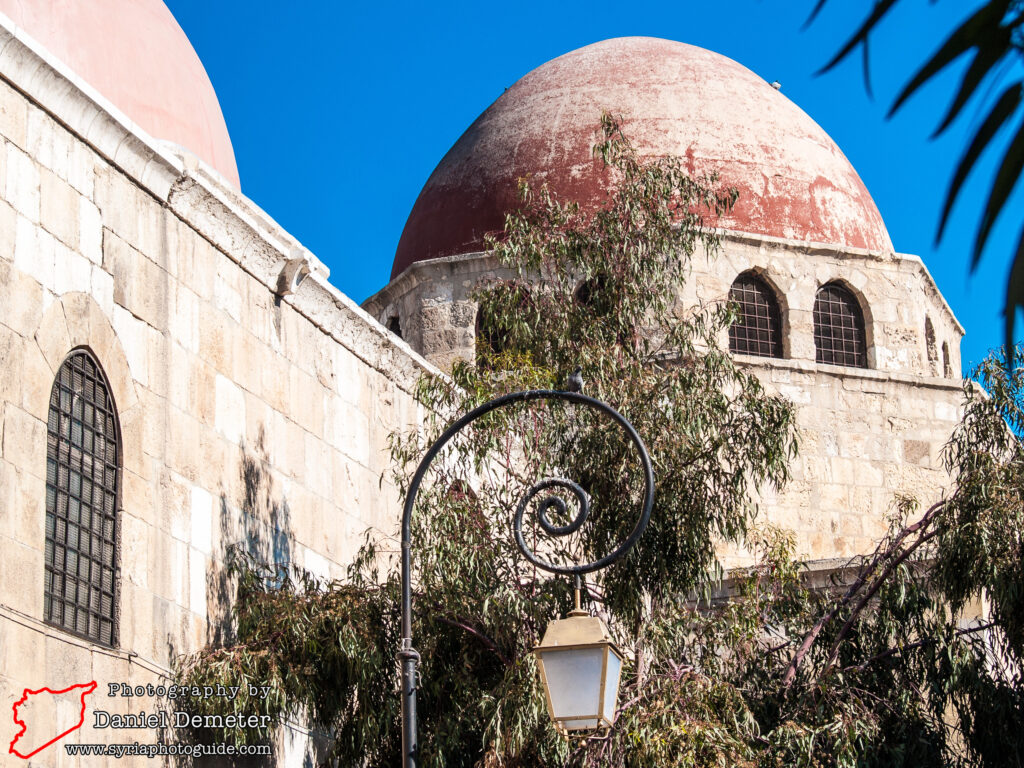
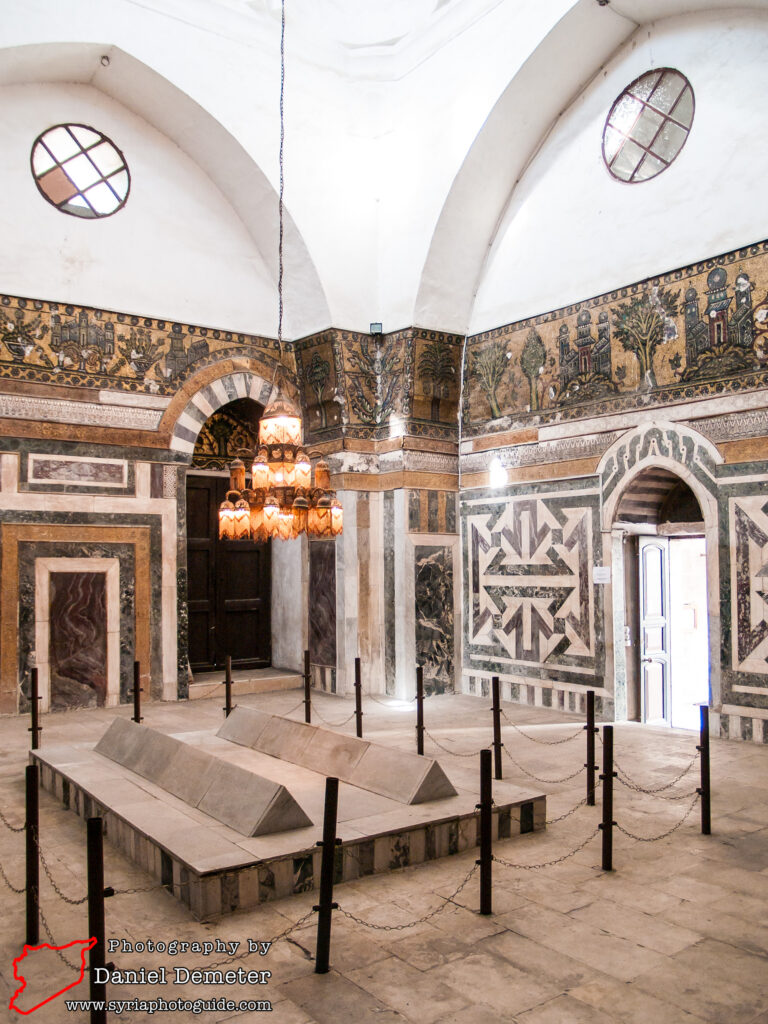

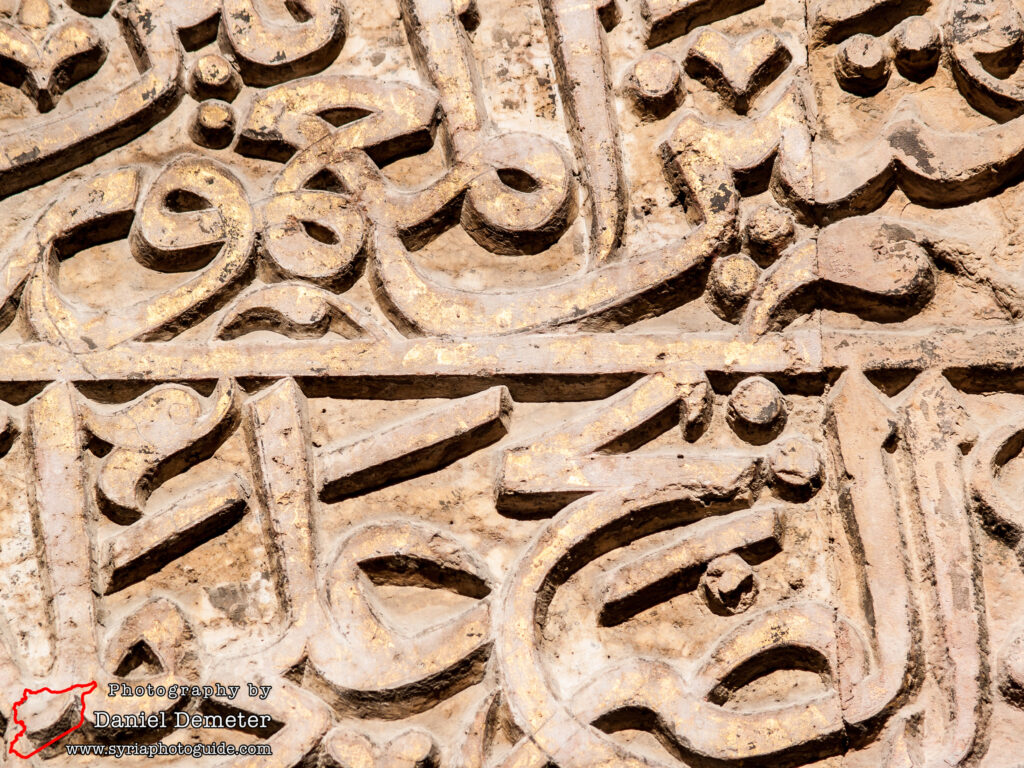
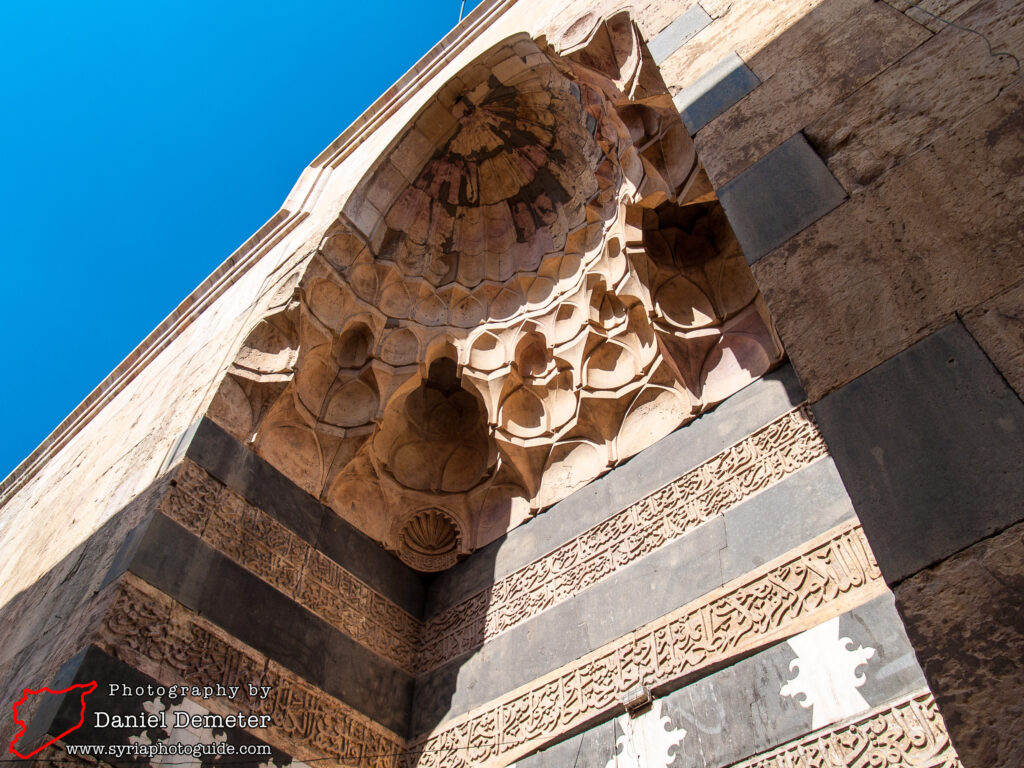
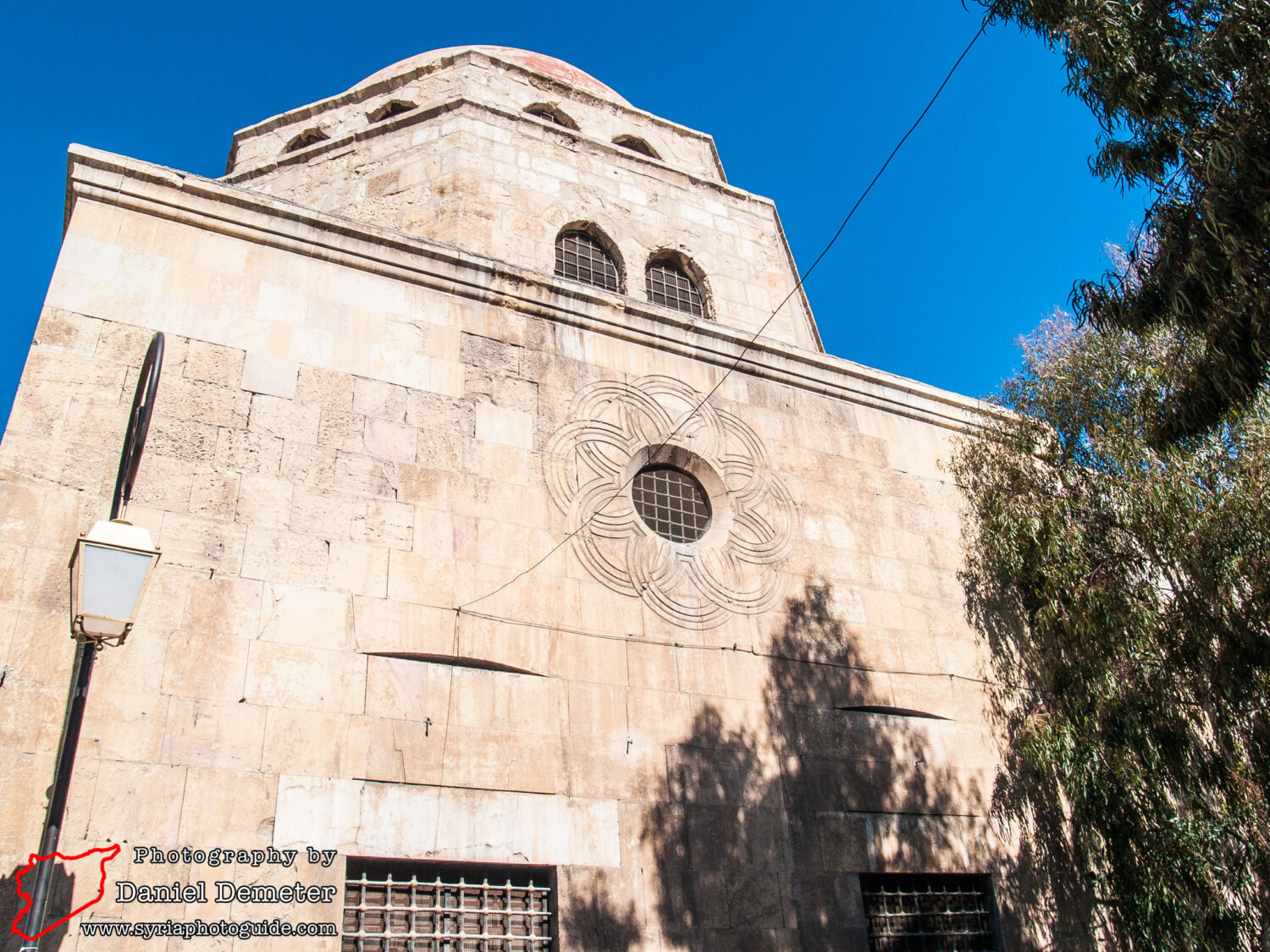
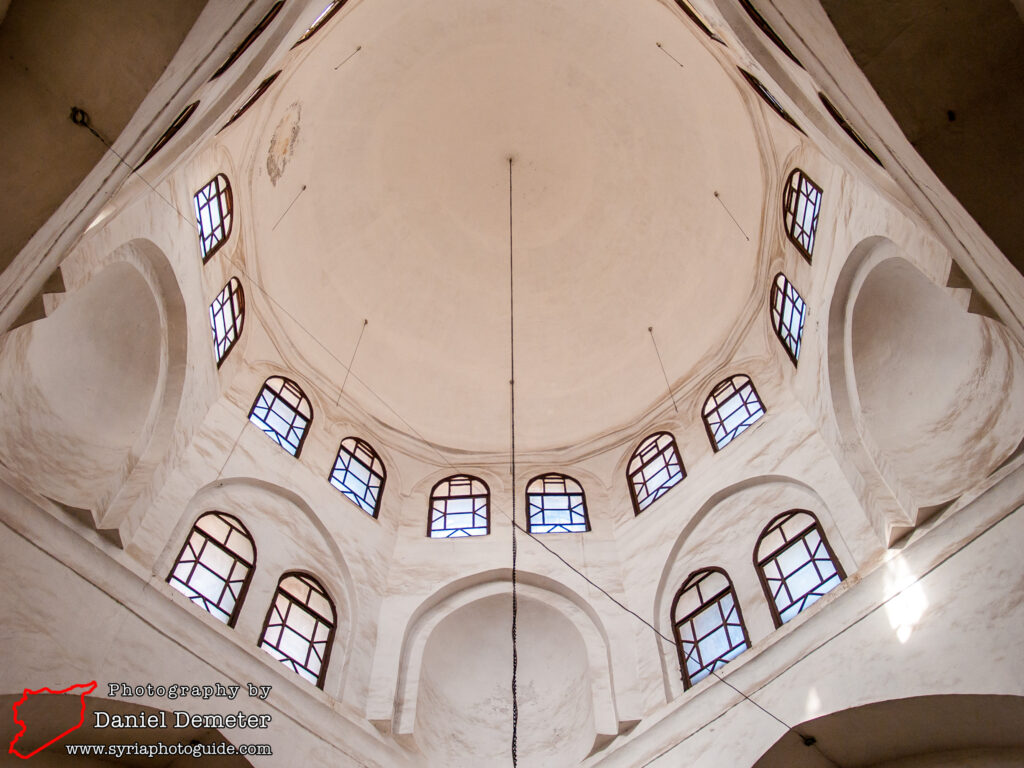
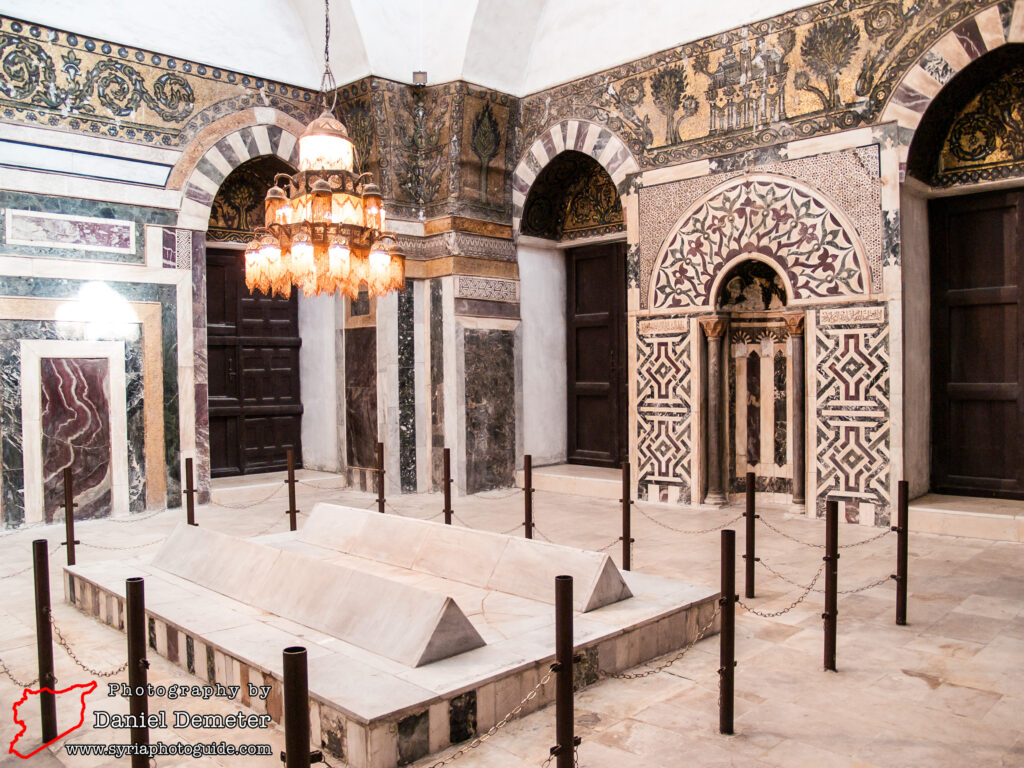
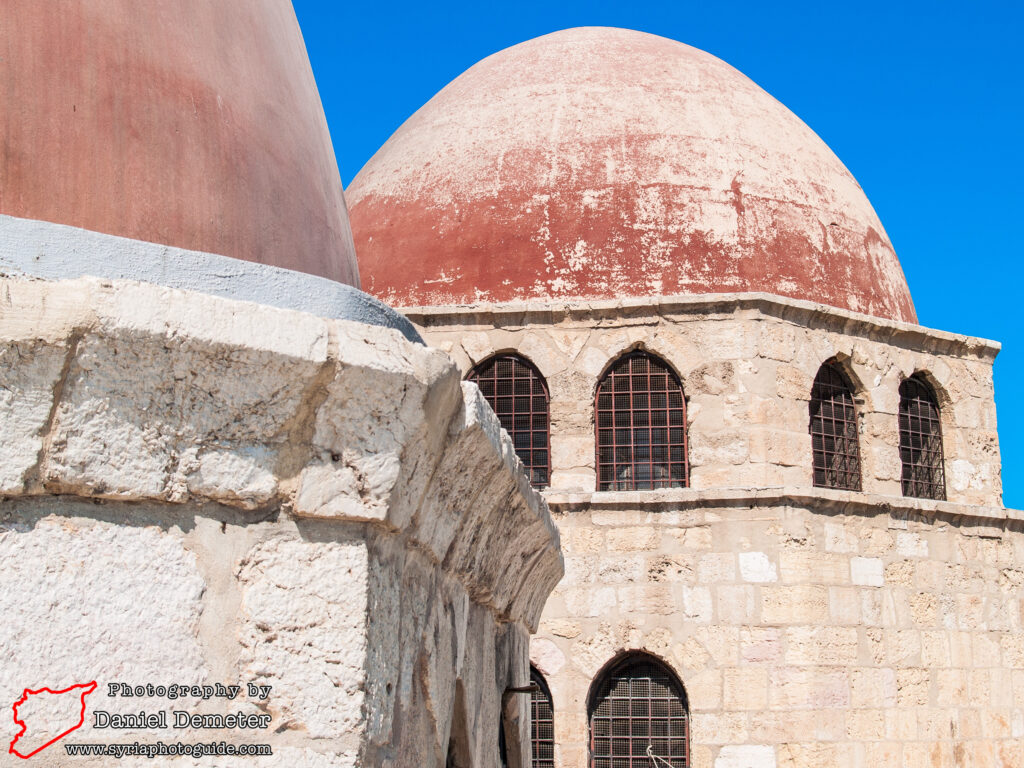
Getting There: al-Madrasa al-Zahiriyeh (المدرسة الظاهرية) is located in the old city of Damascus (دمشق), less than two hundred meters northwest of the Umayyad Mosque (الجامع الاموي) towards the Damascus Citadel (قلعة دمشق).
Coordinates: 33°30’45.00″N / 36°18’19.00″E
Transliteration Variants: al-Madrasa al-Zahiriye, al-Madrasa al-Zahiriyah, al-Madrasa al-Zahiriya, al-Madrasa al-Zahiriyya, al-Madrasa al-Zahariyeh, al-Madrasa al-Zahariye, al-Madrasa al-Zahariyah, al-Madrasa al-Zahariya, al-Madrasa al-Zahariyya
Rating: 5 / 10
